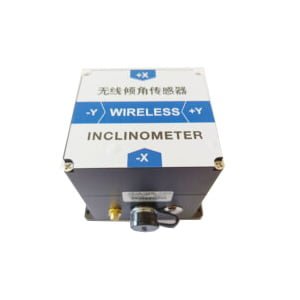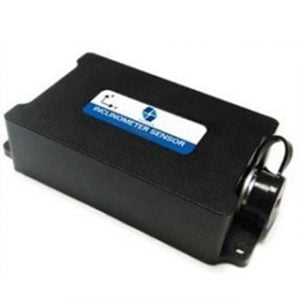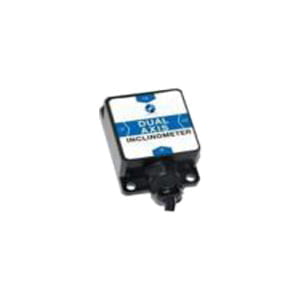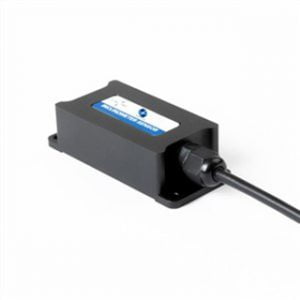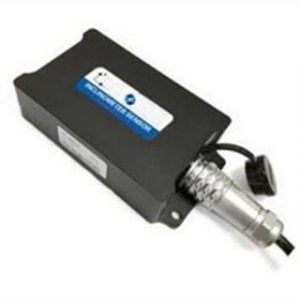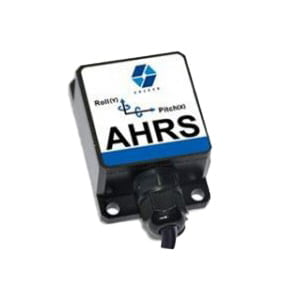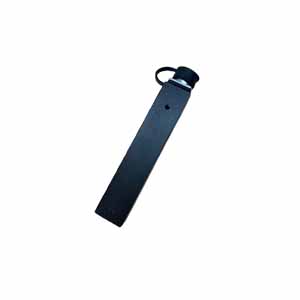Digital Output - Full-posture Three-dimensional Electronic Compass
Introduction
The ER-EC-365A is a high-precision full-posture three-dimensional electronic compass that integrates an industrial-grade three-axis accelerometer and three-axis magnetometer. Using hard-iron and soft-iron calibration algorithms, it provides high-precision heading information within the full tilt range. With low power consumption, it is more suitable for measurement systems sensitive to power consumption and volume.
The product outputs the precise posture of the carrier, which can be used in full-posture rotation systems. It has hard-iron, soft-iron, and tilt compensation functions, enabling it to output high-precision calibrated heading. The three-axis fluxgate uses a CPU to calculate the heading in real time, and the three-axis accelerometer compensates the heading angle, ensuring accurate heading and data acquisition even in extremely harsh environments. Featuring a small size and low power consumption, it is widely applied in oil logging, antenna pointing, vehicle navigation, attitude systems, and many other fields.
Features
1.Built-in ultra-low-power, high-performance three-axis digital magnetic sensor with a measurement range of -800 to +800μT.
2.Multiple data interfaces (optional RS422/RS232 and CAN) for easy installation and use.
3.Precision aluminum alloy housing for high reliability, suitable for medical equipment.
Applications
Oil logging equipment, medical devices, tilt-based monitoring, angle control for various engineering machinery, bridge and dam inspection
Product Model Information
| Item | ER-EC-365A |
| Angular velocity, acceleration | √ |
| Attitude angle | √ |
| Heading angle | √ |
Technical Specifications
| Attitude Orientation Performance | |
| Heading accuracy | <0.5° (RMS, pitch<85°) |
| Resolution | 0.1° |
| (Pitch/Roll angle) range | ±90°/360° |
| Pitch/roll accuracy | 0.4° |
| Hard-iron calibration | yes |
| Soft-iron calibration | yes |
| Tilt calibration | Yes |
Sensor Parameters
| Accelerometer | ||||
| Parameter | Value | Unit | ||
| Range | ±3 | g | ||
| Linear acceleration sensitivity temperature coefficient | ±100 | ppm/°C | ||
| Zero offset | 0.1 | mg | ||
| Zero offset temperature coefficient | ±0.10 | mg/°C | ||
| Acceleration noise density | 150(X/Y)/300(Z) | μg/√Hz | ||
| Bandwidth | 1600(X/Y)/550(Z) | Hz | ||
| Magnetometer | ||||
| Parameter | Period | Unit | ||
| 50 | 100 | 200 | ||
| Measurement range | -800~+800 | μT | ||
| Gain parameter | 20 | 38 | 75 | LSB/μT |
| Sensitivity | 50 | 26 | 13 | nT |
| Noise | 30 | 20 | 15 | nT |
| Noise density at maximum single-axis sampling rate | 1.2 | nT/√Hz | ||
| Repeatability within 200μT | 15 | 8 | 8 | nT |
| Operating temperature range | -40~+85 | °C | ||
| Power Supply and Interface | ||||
| Supply voltage | 3.3~12V | |||
| Power consumption | ≤0.5W | |||
| Interface protocol | RS422 or RS232, CAN | |||
| Operating temperature | -40℃~+85℃ | |||
| Size | 114mm*20mm*20mm | |||
| Output data rate | 50HZ | |||
Application Techniques
1.The Difference Between Gyroscope, Compass, IMU, MEMS
2.Application of Gyroscope in Electronic Compass
3.Principle of digital compass
4.What Is The Difference Between Gyro Error and Compass Error in Navigation?
5.How does an Electronic Compass Work?
6.Do You Know The Difference between electronic compass and GPS navigation?
More Products
